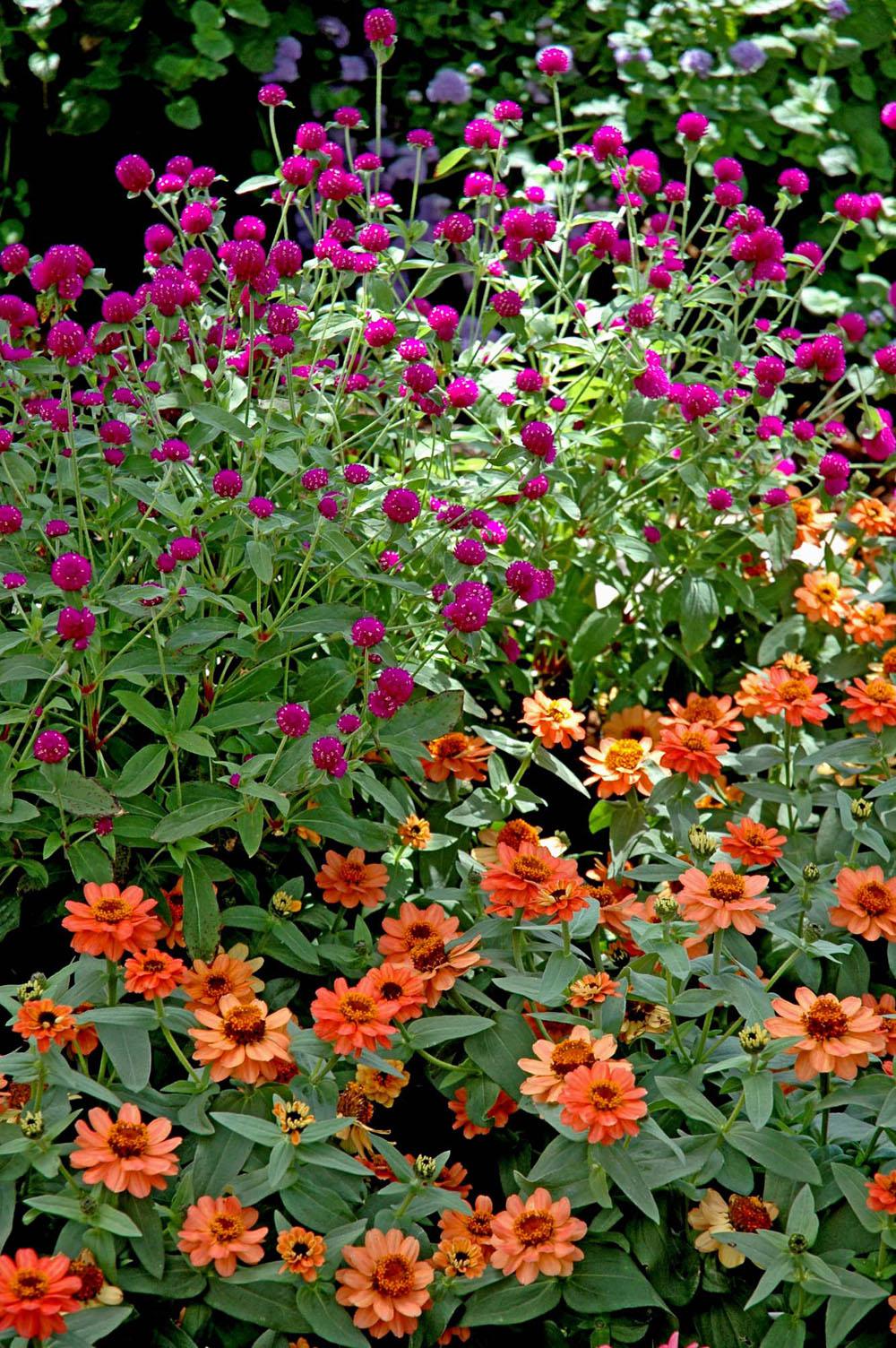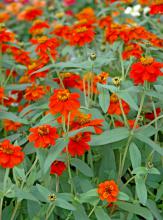Information Possibly Outdated
The information presented on this page was originally released on January 18, 2007. It may not be outdated, but please search our site for more current information. If you plan to quote or reference this information in a publication, please check with the Extension specialist or author before proceeding.
New Profusion zinnias will arrive this spring
By Norman Winter
MSU Horticulturist
Central Mississippi Research & Extension Center
The Profusion zinnias will continue to be hot in 2007. I had the oddest feeling when I visited Sakata Seed in California last April. We were in the middle of our 2006 Mississippi Medallion program promoting the truly outstanding Profusion Fire and Profusion Apricot zinnias.
There I was on the West Coast looking at the newest or improved version of none other than our Mississippi Medallion, Profusion Apricot, which is now called Profusion Deep Apricot. Even though we were promoting it back home, I was delighted to see it had already been improved.
Gardeners will like it even better than the original Profusion Apricot. It is a rich apricot color that will sizzle in the hot summer garden.
There are other new Profusion zinnias that will hit the market this spring. One is Profusion Coral Pink. It looks just as its name suggests, possibly with more emphasis on the pink than the coral. There is also a new Profusion Double Cherry. It has the cherry red of the original but is double petaled.
Profusion Knee High zinnias may generate the real excitement. Available in red and white, these zinnias looked so good that the Ball Seed Co. bought the seeds and rights from Sakata.
As the name suggests, Profusion Knee High zinnias are indeed several inches taller than the typical Profusion zinnias that reach 15 inches. In other words, they are knee high or closer to 20 inches.
The flowers are the same size as Profusions, but with this taller habit, they develop a more open look -- similar to the narrow-leaf zinnias (Zinnia angustifolia) like Star Orange or Classic White, and are sometimes called Mexican zinnia.
This slightly open, airy look works well in the Southern garden and will allow them to partner wonderfully with salvias, gomphrenas and verbenas. They also excel with ornamental grasses like Hameln dwarf fountain or Purple Fountain.
The Profusion zinnias are really disease resistant, making them fun to grow. Select a site in full sun with fertile, well-drained soil because they cannot survive wet feet. Prepare the planting area by tilling in 3 to 4 inches of organic matter along with a slow-release, 12-6-6 fertilizer.
Incorporate 2 pounds of the fertilizer per 100 square feet of planting area. Plant nursery-grown transplants at the same depth they are growing in the container, spacing 10 to 12 inches apart. Apply a layer of mulch after planting. Give them a little snip any time you don't like the shape of any of the Profusion zinnias.
Feed with a light application of fertilizer one month after transplanting and every four to six weeks throughout the growing season. Obviously, we are not ready for zinnia planting, but it is fun to plan and think about what we can do in the landscape when spring arrives.




